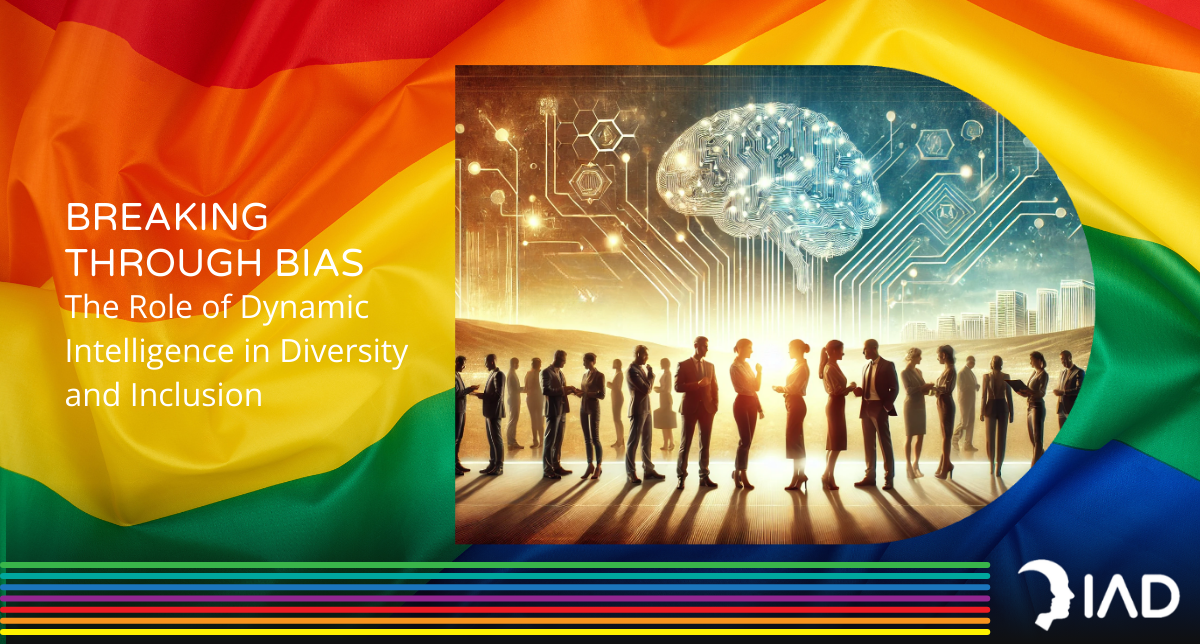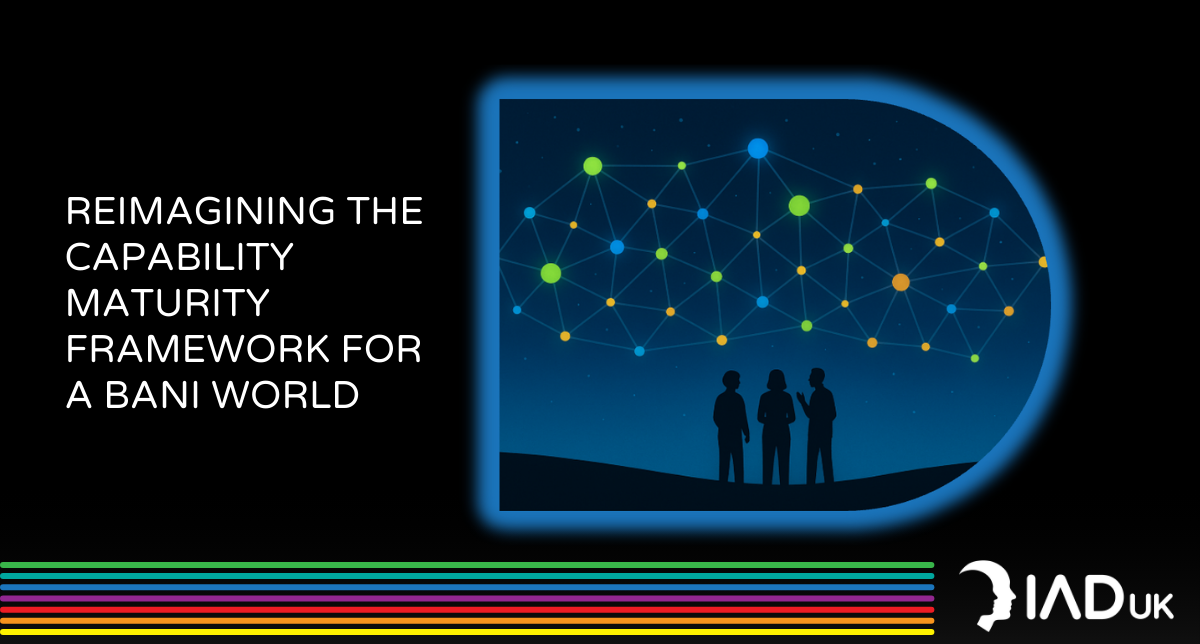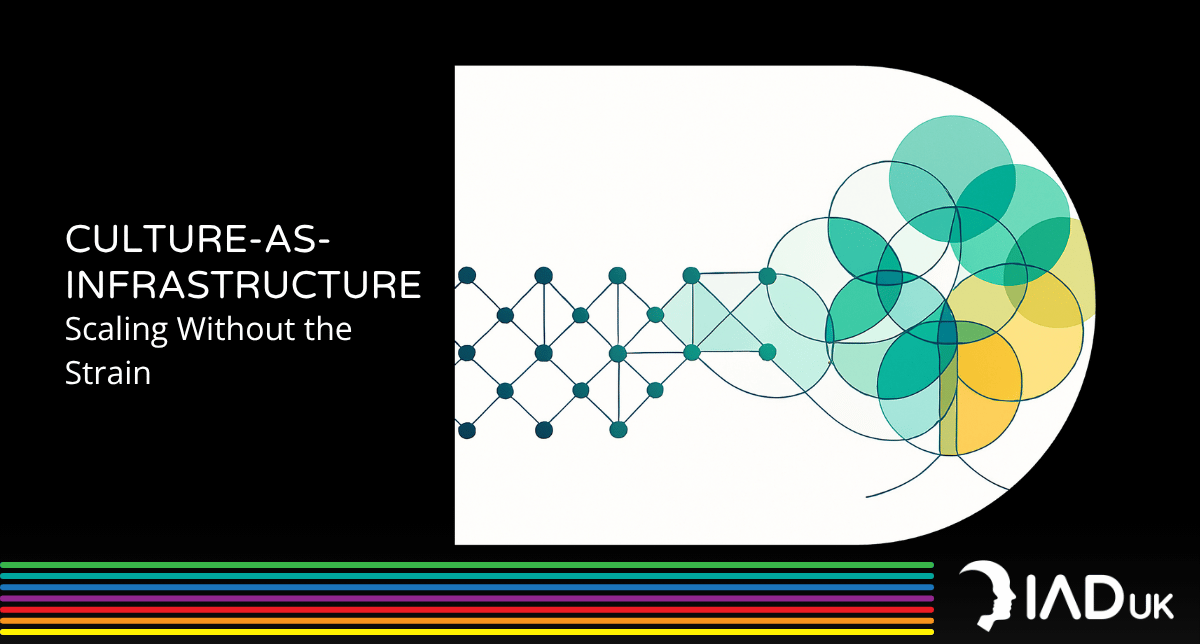Breaking Through Bias
How Expanding Leadership Thinking Drives Meaningful Inclusion

LGBTQ+ History Month is an opportunity for organisations to reflect on their progress in fostering inclusivity. Policies are in place, employee networks are active, and diversity statements are prominently displayed. But for many organisations, the reality remains unchanged: bias still shapes everyday decision-making—from hiring and promotions to who gets heard in meetings.
The challenge isn’t a lack of intent. Most leaders genuinely want to create fair and inclusive workplaces. But bias isn’t just about attitudes—it’s about thinking patterns that operate beneath the surface, influencing choices without conscious awareness.
This is why many diversity initiatives stall 1. They focus on structural policies without addressing the cognitive mechanisms that sustain bias. Leaders might complete awareness training, but without a shift in how they think, their decisions remain subtly shaped by default patterns.
So, what if instead of training leaders to spot bias, we equipped them to think beyond it? What if leadership development addressed the root cause—not just the symptoms?
This is where Dynamic Intelligence (DI) comes in. By increasing cognitive awareness and flexibility, leaders can break free from automatic biases and create workplaces where inclusion isn’t just an initiative—it’s an embedded way of thinking.
But first, we need to understand why traditional approaches to tackling bias don’t go far enough.
Inclusion Starts in the Mind
Most organisations assume that bias is a behavioural issue—something to be corrected through training, policies, and awareness initiatives. But bias isn’t just about behaviour; it’s about how we process information.
Every day, leaders make countless decisions—who to hire, who to promote, whose ideas to prioritise. And while these decisions may feel rational, they are often shaped by unconscious cognitive patterns. Confirmation bias, affinity bias, and status quo bias aren’t just social tendencies; they are habitual thinking constructs that influence how leaders interpret reality.
This is why awareness training alone doesn’t work. Leaders may learn to recognise bias conceptually, but without changing how they think, their default cognitive patterns remain intact. True inclusion doesn’t happen when people try to suppress bias—it happens when they expand their capacity for cognitive diversity.
This is where Dynamic Intelligence (DI) plays a transformative role. Instead of simply making leaders aware of bias, DI increases their ability to see multiple perspectives, challenge ingrained assumptions, and think in more complex, adaptive ways.
And when leaders think differently, they act differently. Recruitment processes become more open. Team dynamics become more inclusive. Decision-making becomes more innovative.
Bias isn’t a knowledge problem—it’s a thinking problem. And the solution isn’t more training. It’s cognitive development.
But what happens when organisations fail to address bias at the thinking level? The consequences go far beyond individual decisions.
The Hidden Impact of Bias on Organisational Performance
Bias isn’t just a social issue—it’s a structural weakness in an organisation’s ability to innovate, engage, and retain talent. When left unexamined, habitual thinking constructs don’t just influence individual decisions—they shape entire workplace cultures 2.
Consider the impact:
- Innovation stalls when teams default to familiar perspectives. Without cognitive diversity, organisations become trapped in predictable patterns, missing out on breakthrough ideas.
- Engagement declines when employees don’t feel seen or valued. If certain voices are unconsciously prioritised over others, the result is frustration, disengagement, and eventual attrition.
- Turnover increases when high-potential talent from underrepresented backgrounds repeatedly faces barriers to advancement. A lack of cognitive diversity leads to homogenous leadership teams, signalling to employees that opportunities aren’t equally accessible.
The irony? Many organisations believe they are making data-driven, objective decisions—but those decisions are often shaped by unexamined cognitive filters (unconscious Cognitive Intentions). The result is an organisation that believes it is inclusive, while systemic biases remain embedded in daily operations.
This is where Dynamic Intelligence (DI) makes the difference. Unlike traditional bias training, which focuses on surface-level awareness, DI develops a leader’s ability to think beyond their own cognitive constructs, making inclusion an ingrained way of operating rather than a compliance-driven effort.
Inclusion isn’t just about who is at the table—it’s about how decisions are made and whose perspectives are considered. So how can organisations take meaningful steps to challenge ingrained thinking patterns and build workplaces where diversity thrives? The answer lies in three intentional shifts.
Reducing Bias with Dynamic Intelligence
1. Recognise and Reframe Your Cognitive Intentions
Most bias training focuses on external behaviour, but the real challenge is the internal cognitive patterns shaping those behaviours. Unconscious Cognitive Intentions—deeply embedded mental habits—determine how we interpret, prioritise, and respond to information. Without examining these, bias remains unchanged.
To develop Dynamic Intelligence, leaders must first map their own Cognitive Intentions and uncover the thinking patterns driving their decisions. Practical steps include:
- Using DIDS™ cognitive profiling to reveal how unconscious Cognitive Intentions influence leadership choices.
- Actively questioning why certain perspectives feel more “credible” or “natural” than others.
- Experimenting with alternative Cognitive Intentions—e.g., shifting from a habitual preference for Sameness to engaging with Difference.
Bias isn’t about conscious prejudice; it’s about unquestioned cognitive defaults. Developing Awareness of Cognitive Intentions is the first step to breaking through bias.
2. Embed Cognitive Diversity in Decision-Making
Most organisations view diversity as a people issue. But inclusion isn’t just about demographics—it’s about how decisions are made. Without cognitive diversity, teams fall into habitual groupthink, reinforcing existing biases.
To integrate diverse thinking:
- Expand the decision-making process. Before making key leadership or hiring decisions, ask: What perspectives are missing from this discussion?
- Implement structured cognitive diversity reviews. Introduce cognitive challenge sessions where alternative viewpoints are actively sought out and tested.
- Break habitual patterns. Rotate leadership responsibilities in meetings to shift who drives discussions and decisions.
Cognitive diversity isn’t about who is in the room—it’s about how different perspectives are engaged. A more inclusive decision-making process challenges bias at its root.
3. Move Beyond Awareness to Active Inclusion
Recognising bias isn’t enough—leaders must be able to adapt their thinking in real time to override default patterns. The key is cognitive flexibility, the ability to shift perspectives, hold multiple viewpoints, and adjust decision-making based on broader awareness.
To cultivate this:
- Practice real-time cognitive reflection. Before making a key decision, pause and ask: Am I operating from habitual assumptions, or have I truly examined alternatives?
- Use Dynamic Intelligence coaching. Engage in DIDS™-based coaching sessions to practise identifying and shifting bias-driven thought patterns.
- Commit to discomfort. Inclusion isn’t always comfortable—it requires engaging with perspectives that challenge existing frameworks. Leaders must be willing to sit with complexity instead of defaulting to familiar narratives.
Active inclusion isn’t about suppressing bias—it’s about expanding a leader’s Dynamic Intelligence to operate beyond it.
And when inclusion becomes embedded in leadership thinking, diversity moves from an initiative to a competitive advantage. But how can organisations take this work further and embed it into their strategy?
Transform Your DEI Strategy with DIDS™
Bias isn’t just a workplace challenge—it’s a thinking challenge. Without addressing the Cognitive Intentions that drive decision-making, even the most well-intentioned diversity strategies will struggle to create lasting change.
This is where Dynamic Intelligence Development System™ (DIDS™) changes the game. By equipping leaders with the ability to recognise, reframe, and expand their thinking, organisations move beyond surface-level diversity initiatives to embed true inclusion into the fabric of leadership and decision-making.
With DIDS™, organisations can:
- Reduce bias at the source by developing Awareness of Cognitive Intentions.
- Improve decision-making by fostering cognitive diversity at every level.
- Enhance workplace culture by creating environments where all perspectives are valued.
If your organisation is ready to break through bias and rethink inclusion from the ground up, we’re here to help.
Book a call to discover how DIDS™ can transform your diversity strategy.
Alternatively, why not download our comprehensive brochure




